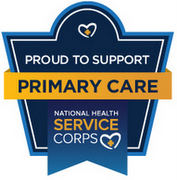Pot and Pregnancy Warning
Pot and pregnancy can be a dangerous combination
The legal use of marijuana is growing, with three U.S. states and the District of Columbia now endorsing legal marijuana use. An additional 21 states allow use of medical marijuana under physician prescription and supervision.
The brain is a sensitive organ vulnerable to a variety of insults. This is particularly true during periods of brain development from conception through adolescence. Studies of pot’s effect on adults cannot be generalized to pregnant women, children or adolescents.
This growing trend for marijuana legalization has not come without a variety of emerging adverse consequences. A recent review of the unexpected adverse health effects of marijuana legalization in Colorado found a spike in marijuana-related burns and increased emergency room visits related to high tetrahydrocannabinol (THC) levels and vomiting.
Children have also been vulnerable to growing environmental exposure to pot. Legalization of marijuana in Colorado has resulted in a spike in emergency room and hospital admissions related to children accidentally ingesting edible THC products. Concern regarding pot and children extends to pregnancy and the developing fetal brain. Despite growing acceptance of marijuana in adults, very little is known about the effect of pot exposure during pregnancy.
What we do know is unsettling. Pot use by pregnant mothers, or second-hand exposure to smoked marijuana, leads to fetal exposure as the active ingredients in pot cross the placenta barrier. Pot contains chemicals related to natural chemicals involved in fetal brain development. Normal fetal brain development requires a precisely-timed, specific-dose exposure to unique chemical signals. Chemicals in pot may disrupt this process and lead to abnormal development and to abnormal migration of fetal brain cells.
Research into fetal pot toxicity is very much in an early stage. What we know is much less than what we don’t know. Given the potential for fetal brain toxicity with pot it is best to err on the side of caution. General medical consensus exists that pot should be avoided during pregnancy.
Pot-smoking female adolescents and women who are considering pregnancy need to stop the use of marijuana. If this can’t be accomplished on their own, they should find an addiction specialist or treatment center that can provide expert care.
Click here to read the article in Addiction.com.
A new study
A new study published this week in the Journal of the American Medical Association (JAMA) reports that 7 percent of pregnant women use marijuana during pregnancy based on health surveys involving nearly 500,000 U.S. women. Pot use during pregnancy has doubled since 2002, research shows. Dr. Nicole Saphier warns that pot and pregnancy can be a dangerous combination.
The purpose of the study was to determine if there was an increase in marijuana use among pregnant women, as we are witnessing a rising number of states where marijuana has been legalized for medical and recreational use.
Marijuana is the most commonly used illicit drug during pregnancy. Based on 467,100 respondents surveyed between 2002 and 2017, the prevalence of daily cannabis use increased among pregnant (and non-pregnant) women ages 12 to 44 years. It was also higher among women in their first trimester of pregnancy, which is a crucial time in fetal development.
Because of concerns regarding impaired fetal development, as well as maternal and fetal exposure to the adverse effects of smoking, women who are pregnant or contemplating pregnancy should discontinue recreational marijuana use and discuss the potential risks with their doctor if using it for medicinal purposes.
Many organizations and growing numbers of elected officials – including Democratic presidential hopefuls Sens. Cory Booker of New Jersey and Elizabeth Warren of Massachusetts – are pushing for marijuana for legalization.
In light of this concerning trend, it is would be bordering on negligent to not issue warnings about the safety of marijuana use during pregnancy. The drug has the proven potential to restrict fetal growth as well as to impair childhood mental functions such as memory, verbal skills and emotional development.
Visit from a friend
A QUICK VISIT
Two weeks ago we received a call from Steve Noblett, Executive Director of Christian Community Health Fellowship (CCHF) that he was going to be in Buffalo for the weekend but was arriving early. Could he come visit us in Rochester? Of course, our response was a hearty “YES!” What follows is a brief report posted by the CCHF office to its mailing list:
While in Buffalo Steve decided to head down the road for a quick visit with Janet Thirlby, Executive Director, and her team at His Branches in Rochester, NY. Steve was able to tour the nearly completed renovation of the original site of His Branches and was also able to visit with Dr. Bill Morehouse, the recently retired Founder of the organization.
His Branches is a community health center with 2 sites and is currently searching for a mission-minded MD/DO. Contact Angela Counce if you know of someone perfect for this job!
If you haven’t listened to Dr. Morehouse’s interview on CCHF|TALK, download it and get a glimpse of the history of His Branches as one of the first CCHF clinics in the US. We promise you will leave the conversation laughing, crying and with some goosebumps!
2019 CCHF Conference
Interwoven
This year’s theme for the annual CCHF Conference, held in Cincinnati on March 28-30, was “Interwoven” – how do we embody the living message of God’s healing in our everyday work as clinicians caring for the afflicted?
At the last minute, due to the unexpected loss of a key staff member, our team from HBHS had to stay back to care for patients, but Dr. Morehouse was able to participate and lead two workshops. All 725 from around the country who were able to attend were deeply encouraged.
The attached PDF is an incomplete overview of the conference with links to some of the speakers.
Bandaid on Finger?
How to do it right
So many times we have to put a bandaid on a finger but it won’t stay there, especially on the tip. Perhaps it’s a child with an injury (or even a finger-stick blood test in the office). Or it’s over a joint and makes the finger stiff. Isn’t there a better way to handle this simple, common task?
There sure is! Watch the video below for a demonstration of all you need to do to get the result you want. Why didn’t I think of it years ago, especially when we had kids at home?
How to use the bandage. pic.twitter.com/Mx1HG1DvYG
— Medical Shots (@TheMedicalShots) March 28, 2019
HBHS Recognized
Health center achieves patient-centered milestone
By Robin L. Flanigan – January 28, 2019
Three years ago, before the community health center His Branches partnered with Common Ground Health, this was a typical scenario:
Moments into a patient’s visit, Medical Director Dr. Matthew Mack would realize he didn’t have the MRI results he needed. He’d then dart to the front of the office to find out where they were. A secretary would search for, and ultimately find, them—just in time for the patient’s visit to end.
“There was zero foresight and the stress level was much higher,” he recalls.
The center’s two locations, in the 19th Ward and Beechwood neighborhoods, experienced similar challenges.
From left, Jenai Lawton, medical assistant, Regina Gonzalez, patient advocate, Dorcas N. Green, registered nurse, Sue Swift, quality improvement advisor with Common Ground Health, and Dr. Matthew Mack, M.D., meet in a huddle at His Branches medical center on Jan. 17, 2019.
“It was planned chaos all day long and across the board,” says Sue Swift, who serves as a quality improvement advisor on Common Ground’s practice transformation team. She worked with staff at both locations on providing comprehensive care before, during and after patient visits.
“It sounds simple,” Swift adds, “but it’s transformative for practices and for patients.”
His Branches’ relationship with Swift as a consultant introduced critical strategies and skills to the safety net practice. As a result, the center reduced wait times, stretched follow-up visits from 15 to 20 minutes, improved patient outcomes, and implemented a host of other care enhancements.
Those quality improvements recently helped His Branches earn renewal as a New York Patient-Centered Medical Home, recognition that the practice is using a holistic, patient-centered approach and is committed to continuous improvement. Research shows that practices using the medical home model benefit from lower health care costs, improved patient experience and better health outcomes.
“Sue was firm and gentle, the perfect combination for a leader,” says Dr. Mack. “We’re a grassroots kind of place and there were times we felt overwhelmed and discombobulated with so many details, but she helped us stay grounded.”
Using metrics to track its entire patient population, rather than only focusing on those who show up for appointments, the center has a much broader perspective and greater ability to close gaps in care. It can, for example, see which patients have not shown up for immunizations or lead screenings, or how many with hypertension and diabetes are overdue for a follow-up visit. Staff can then reach out to these individuals, helping to catch medical issues when they are easier and cheaper to treat.
Jenai Lawton, medical assistant and Regina Gonzalez, patient advocate, talk about care they will provide during the day during a meeting at His Branches Medical Center. Common Ground Health assisted His Branches with putting in place team-based care.
Perhaps the biggest impact has come from establishing care teams, each one comprised of a provider, a nurse, and a patient advocate. The teams meet 30 minutes before the first patient appointment to plan out the day with intention. These huddles ease tension for staff and for patients—the majority of whom are uninsured, qualify for Medicaid, or are otherwise vulnerable—especially when emergencies arise.
The care teams also meet every two weeks to improve the way they work together. Staff members take turns leading the meetings to build leadership skills and rapport.
“Communicating up front makes sense,” says Jennifer Wolford, RN, nurse manager. “We’re just more organized and have a better understanding of a patient’s needs before they come in the door.”
Patients have picked up on the care team structure.
“I am noticing an increase in the number of times I hear ‘She’s my nurse,’” notes Wolford. Patients “are recognizing which nurse works with which provider, and they know specifically who they want to talk with. That builds trust over time.”
As patient problems become more complex, it’s important for practices to develop a mindset of continuous improvement. To that end, different project teams meet on a regular basis to discuss outcome measures, patient-centered metrics, and other topics, and the center is initiating focus groups to learn more about what can be done to improve satisfaction and compliance rates.
In the meantime, the center maintains its own focus on moving toward a value-based payment model, which rewards health care providers for improving health outcomes—not only for performing procedures.
Before the center’s partnership with Common Ground, approximately 90 of its income was a fee-for-service payment model. That dropped to 65 percent during the last fiscal year, reflecting the increased rewards to the practice has earned by improving patient populations outcomes.
“We’re shifting that balance very deliberately and happily,” says Dr. Mack. “Not to be prideful about it, but we’ve worked hard to better focus on value-based payment measures. We are really embracing the concept, and want to be a bigger part of the conversation.”
Long Life? Let’s Do It!
Want to live to be 90?
Here’s your blueprint.
An eye-opening new Harvard study reveals 5 brutal truths about people who live the longest. With all the advances in medicine, nutrition, and science, in terms of life expectancy, where do you think the U.S. ranks compared to the rest of the world? First? Fifth? Twentieth?
Nope, nope, and nope: At an average expectancy of 76.3 years, the U.S. comes in 43rd out of 195 countries. And it gets worse. By 2040, researchers predict the U.S. will have fallen to 64th in the world.
In a study 34-year study of more than 100,000 people, the researchers determined there are five factors that contribute most to living longer:
- Eat a healthy diet
- Get regular exercise
- Maintain a healthy body weight
- Don’t smoke
- Drink alcohol in moderation
The list contains no surprises — but does lead to a surprising conclusion. Based on the data, say you…
- Exercise at least thirty minutes a day
- Maintain a “low” BMI of between 18.5 and 24.9
- Drink no more than two glasses of wine (men) or one glass (women) per day
- Don’t smoke
- Eat a healthy diet
Do those things and compared to people who don’t meet any of those criteria, if you’re a woman your life expectancy improves from 79 to 93.1 years old. If you’re a man, your life expectancy increases from 75.5 to 87.6 years old. Yep: Women get 14 additional years; men get 12 more years.
While such a sizable difference in life expectancy might seem far-fetched, think about it this way. The top five determinants of average lifespan are “lifestyle” diseases: Obesity, high blood pressure, elevated blood sugar, and alcohol and tobacco use.
Take body weight: Being overweight or obese is linked to serious health consequences like heart disease and stroke, Type 2 diabetes, and even some forms of cancer.
That’s why the people who met the five criteria were 82 percent less likely than those who did not to die from cardiovascular disease and 65 percent less likely to die from cancer.
Yep: Big numbers.
So if you want to live longer — and who doesn’t? — the path is simple. Simple, yet hard. Anyone who tries to tell you that eating right, exercising regularly, and maintaining a healthy body weight is easy… is either lying, or trying to sell you something.
But you definitely can do it — especially since the payoff, both short- and long-term, is so huge. If you’re overweight, start eating healthier. Start exercising more. That will actually knock three items off the list, since the combination of a better diet and more exercise will also reduce your body fat percentage.
Then keep your alcohol intake moderate. (It’s okay to exceed the limit once in a while; the goal is to stay at or below an average of the equivalent of one or two glasses of wine.) And do everything you possibly can to stop smoking.
Keep in mind that even if you don’t meet all five criteria, meeting a few will still pay off. Researchers found a “dose-response relationship” between each individual healthy lifestyle behavior and a reduced risk of early death. Iin non researcher-speak, that means any lifestyle improvements you make will positively impact your life expectancy.
Lower your BMI and you should live longer. Exercise more and you should live longer. Eat healthier and you should live longer. And you’ll feel better today.
Win-win.
Article by By Jeff Haden, Contributing editor, Inc.com.
Social Media and Depression
Fascinating new Ivy League study
shows the ‘Clear Causal Link’ between Facebook, Instagram and Snapchat and ‘Loneliness and Depression’.
Facebook would be nothing without its Ivy League roots. But now a new Ivy League study could mean big trouble for Facebook, along with Instagram and Snapchat for that matter. That’s because this is the first study to show a “clear causal link” between using these three sites and being lonely and depressed.
Other studies have certainly found that heavy users of Facebook and other social media sites suffered mental health issues. But that was about correlation, not causation. Those studies mostly found that it could simply be that people who are depressed and lonely to begin with wind up using Facebook and similar sites more often–as opposed to the sites themselves causing the issues.
This new study from the psychology department at the University of Pennsylvania, however, says it’s made the crucial link. Here it is in their own words, in what’s probably the most important passage in their published research:
[O]urs is the first study to establish a clear causal link between decreasing social media use, and improvements in loneliness and depression. It is ironic, but perhaps not surprising, that reducing social media, which promised to help us connect with others, actually helps people feel less lonely and depressed.
[Emphasis added, because it’s so important.]
The research is due to be published in the January edition of the peer-reviewed Journal of Social & Clinical Psychology (opens as PDF file). The study, conducted by professors Melissa Hunt, Rachel Marx, Courtney Lipson and Jordyn Young, focused on 143 University of Pennsylvania undergraduates, who were tested over a period of weeks on seven different scales that measure moods and psychological well-being.
Click here to read the whole article by Bill Murphy Jr., Contributing editor, Inc.com.
For Busy Moms
Morning Routine Cheat Sheet
The journey from your pillow to your working day is an epic one, especially if you have a family to wake up with you.
Do you want to make this complicated journey easier on you and everyone you live with?
If yes, give the frantic morning rush a kick start with The Morning Routine Cheat Sheet!
The Morning Routine Cheat Sheet will help you nail these steps:
1 - Getting out of bed 2 - Using the bathroom 3 - Having breakfast 4 - Getting dressed 5 - Preparing lunch 6 - Packing your bags 7 - Leaving the house!
FDA mulls vaping ban
Flavored e-cigs appealing to minors
The U.S. Food and Drug Administration is considering a ban on flavored e-cigarettes in response to an “epidemic” of young people using e-cigarettes, the agency’s leader said on Wednesday.
In a speech at FDA headquarters, Commissioner Scott Gottlieb said the agency would also revisit its compliance policy that extended the dates for manufacturers of flavored e-cigarettes to submit applications for premarket authorization.
“We see clear signs that youth use of electronic cigarettes has reached an epidemic proportion,” Gottlieb said.
Gottlieb announced a number of steps the agency planned to take as part of a broader crackdown on the sale and marketing of e-cigarettes to kids. The agency issued 12 warning letters to companies that it says have deceptive marketing labels on e-liquids. “We cannot allow a whole new generation to become addicted to nicotine,” he said.
Shares of British American Tobacco were up nearly 6 percent and shares of cigarette-maker Imperial Brands PLC were up more than 3 percent. Shares of cigarette and e-cigarette maker Altria Group also rose more than 6 percent, while Philip Morris International shares were up 4 percent.
Manufacturers offer and market e-cigarette flavors that appeal to minors, including candy, bubble gum and fruit flavors. The FDA said more than 2 million middle school and high school students used e-cigarettes in 2017.
The FDA is giving the five top-selling e-cigarette brands – Juul Labs Inc., Vuse, MarkTen XL, Blu and Logic – 60 days to provide plans for how they will mitigate sales to minors.
Juul Labs said it would work with the FDA on its request and is committed to preventing underage use of its product. But it added that “appropriate flavors play an important role in helping adult smokers switch,” spokeswoman Victoria Davis said. The owners of Vuse, MarkTen XL, Blu and Logic did not immediately respond to requests for comment.
“While we remain committed to advancing policies that promote the potential of e-cigarettes to help adult smokers move away from combustible cigarettes, that work can’t come at the expense of kids,” Gottlieb said.
As part of its broader enforcement efforts, the FDA said it issued more than 1,300 warning letters and fines to retailers who illegally sold e-cigarette products to minors.
Reported by Fox News.
Addicted to Pot?
America’s Invisible Pot Addicts
More and more Americans are reporting near-constant cannabis use, as legalization forges ahead.
Public-health experts worry about the increasingly potent options available, and the striking number of constant users. “Cannabis is potentially a real public-health problem,” said Mark A. R. Kleiman, a professor of public policy at New York University. “It wasn’t obvious to me 25 years ago, when 9 percent of self-reported cannabis users over the last month reported daily or near-daily use. I always was prepared to say, ‘No, it’s not a very abusable drug. Nine percent of anybody will do something stupid.’ But that number is now [something like] 40 percent.”
They argue that state and local governments are setting up legal regimes without sufficient public-health protection, with some even warning that the country is replacing one form of reefer madness with another, careening from treating cannabis as if it were as dangerous as heroin to treating it as if it were as benign as kombucha.
But cannabis is not benign, even if it is relatively benign, compared with alcohol, opiates, and cigarettes, among other substances. Thousands of Americans are finding their own use problematic in a climate where pot products are getting more potent, more socially acceptable to use, and yet easier to come by, not that it was particularly hard before.
Click here to read Annie Lowery’s penetrating article in this month’s Atlantic Monthly magazine.


















 I'm a happy person who loves getting to know and being able to help people of all ages. I connect with little children (and the little child in most adults) almost immediately. Sharing the joys and trials of relationships, pregnancy and delivery, and family life are the things about family practice that really light my fire. I've found that having a sense of humor and seeing God's love at work can see us through some of life's most difficult times, if we can keep the faith and hang in there together.
I'm a happy person who loves getting to know and being able to help people of all ages. I connect with little children (and the little child in most adults) almost immediately. Sharing the joys and trials of relationships, pregnancy and delivery, and family life are the things about family practice that really light my fire. I've found that having a sense of humor and seeing God's love at work can see us through some of life's most difficult times, if we can keep the faith and hang in there together. 


